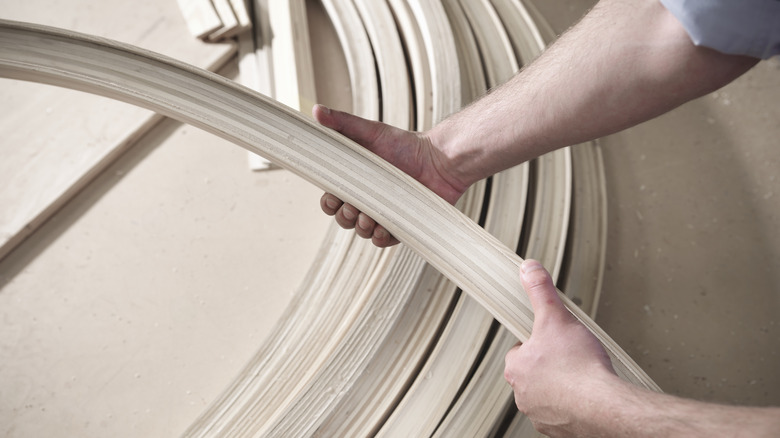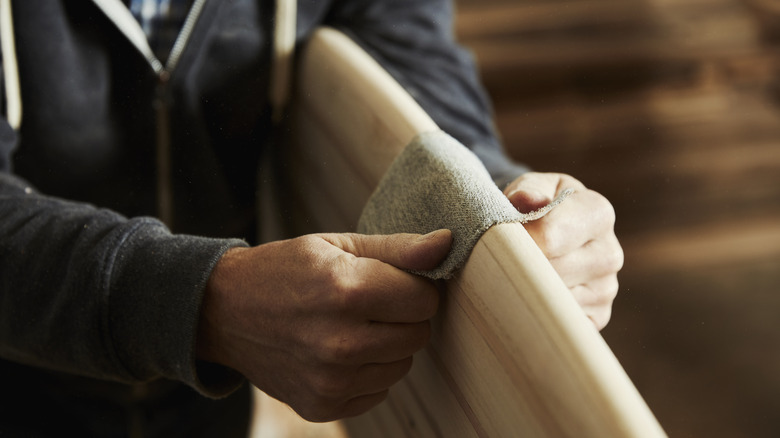How To Sand Curved Edges Without The Need For Expensive Equipment Or Complicated Hacks
There's nothing like running your hand over the grain of a smooth, handcrafted piece of furniture that you worked on. Once you've mastered sanding square edges, you may be excited to take your woodworking skills to the next level with a project that's all curves and crevices. But, you may also lack the specialized tools you think you need for the job. And as affordable as the woodworking tool every DIYer wants to own is, not every tool may be budget-friendly for a hobbyist carpenter. When it comes to sanding curved edges, you only really need some elbow grease, a sanding belt for handheld work or a foam sanding pad with an electric sander, and a little ingenuity.
Whether your project is concave or convex shaped, the curves are tight or gentle, and regardless of the type of wood you're trying to shape, chances are that you probably already have most of the tools and materials at hand. And, with a few modifications, you will be sanding those curved edges in no time at all. After all, the best thing about woodwork is that getting handsy and dirty is part of the fun.
Sand curved wood with a belt or foam pad
The genius sanding hack for rounded edges to keep their shape had us busting out door hinges as we practiced perfecting our (wooden) curves. But, while the tip is perfect for small curves that fit within the width of the hinges, it has a minimal application. This is where a sanding belt really shines. While it admittedly is not as easy to use as a door hinge or a PVC pipe that also fits the edge you're trying to tame, it can be implemented on a wide range of varying curves. Simply loop the sanding belt around the wood piece and pull it back and forth like a shoeshiner on the set of a Fred Astaire movie. For an easier grip, clamp the belt between two wood blocks secured with screws to create a handle on each side.
For gentle curves, attach a foam sanding pad to your electric sander. The soft sponge conforms to the object's shape while you sand using smooth, even strokes. You can even make your own homemade sanding block by gluing sandpaper onto a wooden or foam block. Another cheap way to do this is to attach sandpaper to an old mouse pad or try a simple dish sponge trick the next time you're sanding those soft, sweeping bends.
As for detailed curve work, wrap some sandpaper around a round or half-round file. The shape of the file and the grit of the sandpaper are ideal for tighter edges, which are sometimes more difficult to sand with larger tools. Even a hard-as-nails piece of hardwood can be brought to submission by applying pressure in the right way.

